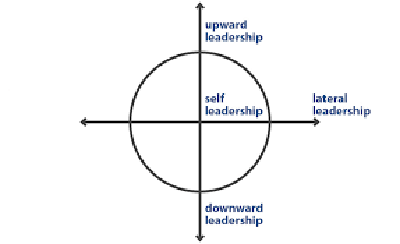Also known as: Horizontal leadership, peer-to-peer leadership
Lateral leadership refers to the goal-oriented, social influence exerted among colleagues of equal hierarchical status. Unlike traditional hierarchical leadership, where influence flows vertically from superiors to subordinates, lateral leadership emphasizes collaboration, communication, and mutual coordination to accomplish shared tasks.
Definition and Characteristics
In lateral leadership, leadership is exercised without formal authority. Instead of using directives, individuals lead through:
-
Persuasion and negotiation
-
Shared objectives and common interests
-
Trust-based collaboration
-
Mutual respect and influence
Lateral leadership typically occurs:
-
Within teams or departments where members operate on the same level
-
Across cross-functional teams, project groups, or matrix organizations
-
Between partners in inter-organizational networks or temporary alliances
🔗 See also: Transformational leadership, Motivating leadership, Multiperspectivity
Key Functions of Lateral Leadership
-
Facilitating coordination among equals
-
Managing conflict through consensus, not authority
-
Enabling agile teamwork across disciplinary boundaries
-
Promoting accountability without hierarchical enforcement
-
Supporting innovation and knowledge exchange
Skills Required for Lateral Leaders
Because lateral leadership lacks formal power, it relies heavily on interpersonal and communication competencies, including:
-
Emotional intelligence
-
Active listening
-
Influence without authority
-
Constructive feedback techniques
-
Negotiation and facilitation
Organizational Context
Lateral leadership is particularly vital in:
-
Matrix organizations, where multiple reporting lines exist
-
Agile teams, where distributed leadership and self-management are encouraged
-
Project-based work, especially in innovation, R&D, and IT development
-
Modern, decentralized organizational cultures, where collaboration is preferred over hierarchy
Advantages
-
Encourages collaborative culture
-
Increases flexibility and responsiveness
-
Reduces bottlenecks in decision-making
-
Promotes peer accountability and motivation
Challenges
-
Lack of formal authority can hinder implementation
-
Ambiguity in responsibilities may create conflict
-
Requires a high degree of communication maturity among peers







